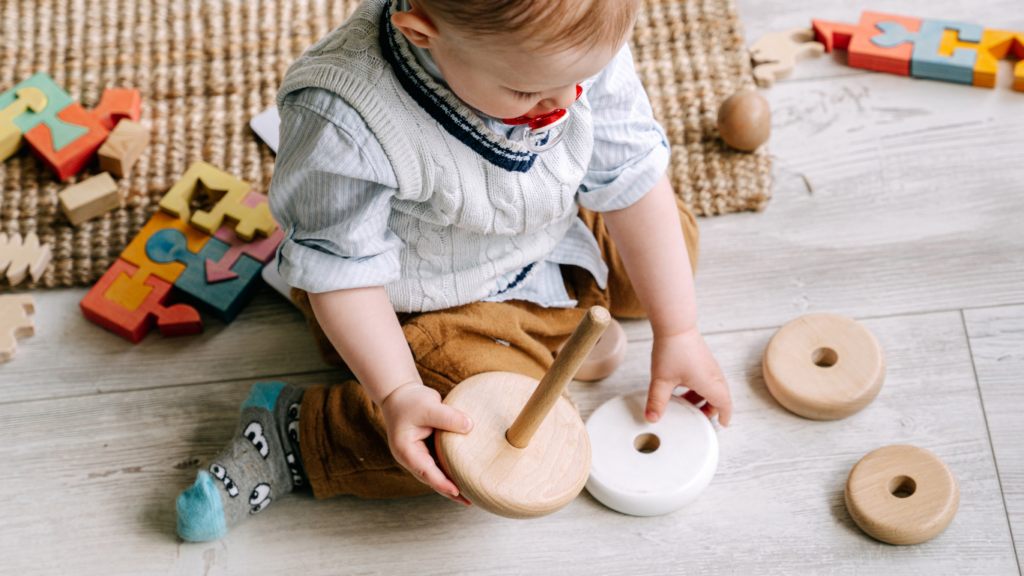Watching a baby grow from a tiny bundle to a curious toddler is nothing short of magical. The first two years are packed with incredible milestones that lay the foundation for future learning and development.
From the first crawl to the first words, each stage reveals a world of exploration and communication. I’ve always been fascinated by how these early experiences shape a child’s understanding of their surroundings.
Understanding these key developmental stages can help parents and caregivers support their little ones as they navigate this exciting journey. Let’s dive into the remarkable transformations that occur during these formative years and explore how each step—from crawling to talking—plays a crucial role in a child’s growth.
Overview of Early Development
Early development spans a crucial period in a child’s life, encompassing the first two years, where rapid changes unfold physically, emotionally, and cognitively. Observing these developmental stages offers insights into a child’s interaction with their surroundings.
Physical Development
Physical development involves significant milestones. At around 3 months, babies begin to control their head movements. By 6 months, many sit up independently. Crawling typically emerges between 7 and 10 months, paving the way for exploring their environment.
By 12 months, most children pull up to stand and cruise along furniture, showcasing increased strength and coordination.
Cognitive Development
Cognitive development encompasses the ability to think, learn, and understand. Infants start recognizing faces and voices within the first few months. By 9 months, they engage in simple problem-solving, such as reaching for out-of-reach toys.
Around 12 to 18 months, toddlers begin to demonstrate object permanence, understanding that objects continue to exist even when out of sight.
Language Development
Language development unfolds rapidly during these early years. From cooing and babbling at 3 to 6 months, infants experiment with sounds. By 12 months, many say their first words, which typically include simple terms like “mama” or “dada.” By 18 months, vocabulary expands significantly, with many toddlers using 10 to 25 words.
Social-Emotional Development
Social-emotional development involves forming connections with caregivers and the environment. Infants express emotions like happiness or distress by 2 months. By 6 months, they show preferences for familiar faces, indicating attachment.
Between 12 and 24 months, toddlers begin to exhibit jealousy, empathy, and other complex emotions while engaging in parallel play with peers. Each of these developmental stages significantly influences a child’s growth trajectory, laying foundational skills for future learning and relationships.
Recognizing these milestones allows parents and caregivers to support and nurture their child’s journey effectively.
Crawling: The First Milestone
Crawling marks a significant developmental milestone in a baby’s journey. This stage typically occurs between 7 and 10 months, laying the groundwork for further motor skills and exploration.
Physical Development
Crawling involves multiple muscle groups and coordination. Babies engage their arms, legs, and core as they propel themselves forward. This not only strengthens muscles but also improves balance and coordination.
Some babies might crawl in various styles, such as the classic crawl, scooting, or army crawling. This diversity emphasizes the uniqueness of each child’s development and highlights their individual strengths.
Cognitive Growth
Crawling stimulates cognitive growth by enhancing spatial awareness. As babies explore their environment, they learn about different textures, shapes, and distances. They begin to engage more with their surroundings, developing problem-solving skills.
For instance, navigating obstacles fosters persistence, as infants figure out ways to reach a desired toy. This exploration supports cognitive development, contributing to later skills like critical thinking and creativity.
Walking: Taking the Next Step
Walking signifies a major milestone in a child’s development, marking a transition to greater mobility and independence. This phase usually begins around 12 months and evolves as toddlers develop their balance and coordination.
Balance and Coordination
Balance and coordination become crucial as toddlers learn to walk. Initially, they may take wobbly steps, relying on furniture and other supports for stability. By 18 months, most toddlers can walk independently, demonstrating improved ability to maintain balance.
Exercises like holding onto furniture help strengthen their core muscles and enhance their control over movements. Regular practice allows toddlers to refine their walking skills, promoting smoother transitions from standing to walking.
Exploration and Independence
Walking boosts exploration and independence, allowing toddlers to engage with their environment more freely. As they gain mobility, they explore new spaces, objects, and interactions. This newfound independence fosters confidence, encouraging risk-taking behaviors that are essential for learning.
Parents can support this exploration by creating safe environments and providing opportunities for outdoor activities, such as walking in parks or playing in gardens. Independence in walking sets the stage for further social interactions and cognitive development as toddlers navigate their world.
Talking: Language Acquisition
Language acquisition begins early, with infants quickly developing essential communication skills. By listening to sounds and patterns, they form the foundation for speech and language development.
First Words and Communication
Infants typically utter their first words around 12 months, with “mama” and “dada” being common examples. They may also start mimicking sounds and gestures, establishing a basic form of communication.
By 18 months, toddlers often expand their vocabulary to 50 words, including simple nouns and verbs. Listening plays a critical role in language development as infants absorb speech patterns and vocabulary from their caregivers.
Responsive interactions, such as reading books and singing songs, promote this acquisition. Consistent exposure to language helps toddlers begin to combine words into simple phrases by 24 months, signaling a significant leap in their communicative abilities.
Social Interaction and Expression
Social interaction enhances language development as toddlers engage more with caregivers and peers. Gestures, facial expressions, and vocalizations form crucial components of early communication.
By 15 months, toddlers often point to objects, exhibit interest in others, and respond to simple questions, showcasing their increasing social awareness. Around 24 months, children begin to understand turn-taking and conversational exchanges, participating in dialogue with adults and peers.
Encouraging these interactions fosters social skills and enriches their vocabulary. Engaging in play with others also allows toddlers to experiment with language, expressing their needs and desires more effectively as their vocabulary expands.
Overall, fostering an environment rich in language exposure, interaction, and play is vital for supporting infants and toddlers during this crucial developmental stage.
Emotional and Social Development
Emotional and social development during the first two years involves significant growth in how infants express feelings, form attachments, and understand others. Infants begin showing preferences for familiar caregivers by 2 to 3 months, developing secure attachments that provide comfort and stability. These early bonds set the stage for future relationships.
- Attachment Formation: Secure attachment occurs when infants receive consistent care and emotional support. This attachment fosters trust, enabling infants to explore their surroundings with confidence.
- Emotion Recognition: By 6 months, infants start recognizing and responding to basic emotions in others. They often smile back at caregivers and exhibit joy through laughter and cooing. By 12 months, they can differentiate between happy, sad, and angry expressions.
- Complex Emotions: Between 12 and 24 months, infants experience more complex emotions such as jealousy, empathy, and frustration. They react to others’ emotions, demonstrating a budding understanding of social dynamics.
- Peer Interaction: Social interactions begin with simple play by the end of the first year. By 15 months, toddlers show increased interest in other children. They engage in parallel play, where they play alongside, not necessarily with, other toddlers.
- Communication Enhancement: Social interactions are crucial for language development. By 24 months, toddlers start to use gestures alongside words. They use these tools to express desires and emotions, enhancing their communication skills.
- Turn-Taking and Sharing: As toddlers approach their second birthday, they start grasping social cues surrounding turn-taking in conversations. They become more adept at sharing toys and participating in group activities, which fosters cooperation and social skills.
Understanding emotional and social development during this stage provides valuable insights for parents and caregivers. Supporting these early connections encourages healthy emotional growth, paving the way for positive relationships and interpersonal skills in later life.



